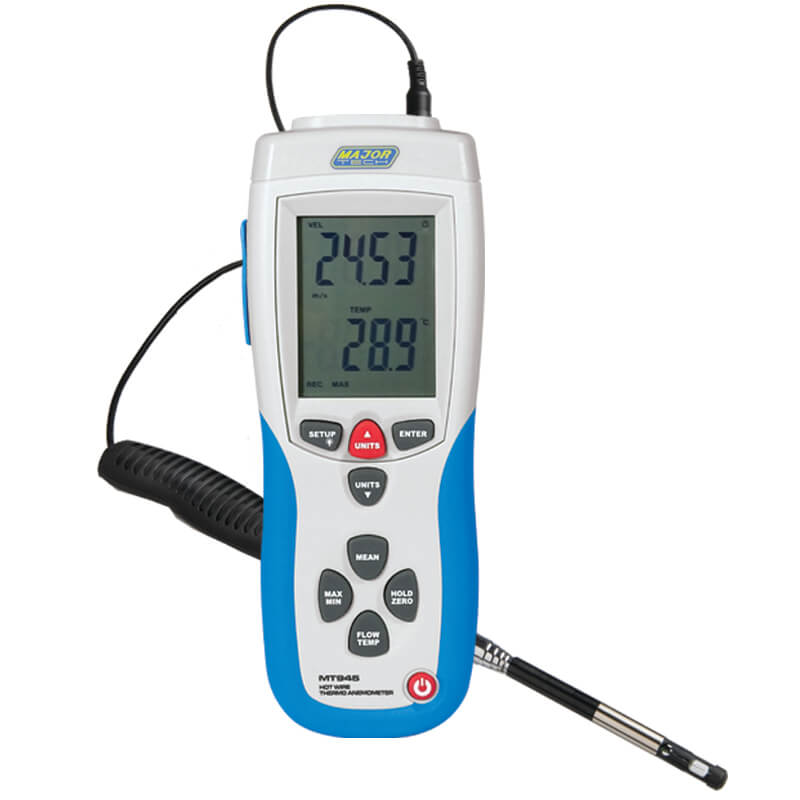Specialist Tips for Adjusting Your Anemometer for Ideal Performance
Specialist Tips for Adjusting Your Anemometer for Ideal Performance
Blog Article
Anemometers Unveiled: Understanding Their Significance in Ecological Surveillance and Safety And Security Actions
The duty of anemometers in environmental monitoring and security measures is commonly undervalued, yet their value is undeniable. From weather forecasting to aviation safety and security, anemometers play an important role in supplying exact data that educates decision-making processes and improves total security.
Background of Anemometers
The evolution of anemometers can be traced back to the ancient people where primary wind measuring gadgets were very first made use of. One of the earliest well-known anemometers was the hemispherical mug anemometer invented by Leon Battista Alberti in the 15th century.
In the 18th century, the distinguished researcher John Thomas Romney Robinson presented the Robinson anemometer, which included 4 hemispherical mugs placed on straight arms that expanded from a main axis. This layout came to be a standard in meteorological measurements due to its accuracy and reliability. Throughout the years, developments in innovation resulted in the development of more modern anemometers, including ultrasonic anemometers and laser Doppler anemometers, offering increased precision and performance in gauging wind rate and instructions. The history of anemometers showcases an impressive trip of technology and progression in the area of weather forecasting.
Kinds of Anemometers
Throughout the field of meteorology, numerous kinds of anemometers have been created to precisely measure wind rate and direction. The most usual type is the mug anemometer, which is composed of three or 4 cups placed on horizontal arms that rotate with the wind. As the mugs spin, the rate at which they turn is directly symmetrical to the wind speed. An additional commonly used kind is the vane anemometer, which features a tail or fin that aligns itself with the wind instructions. This alignment permits the gadget to determine the wind instructions. Sonic anemometers use ultrasonic signals to determine wind speed and instructions accurately. They are frequently used in study applications due to their high accuracy. Hot-wire anemometers operate based upon the concept that the cooling impact of wind on a warmed wire is symmetrical to the wind rate. These anemometers are suitable for determining reduced wind speeds with high precision. Each sort of anemometer has its strengths and is picked based on the certain demands of the tracking job handy.
Applications in Weather Forecasting
Having actually reviewed the various sorts of anemometers utilized in meteorology for determining wind speed and direction, it is vital to discover their sensible applications in the area. Anemometers play a crucial role in meteorology by offering accurate and real-time data on wind conditions (anemometer). Meteorologists use anemometers to monitor wind speed and instructions to anticipate climate patterns, concern cautions for serious weather condition events like typhoons, tornadoes, and storms, and evaluate weather for aeronautics security
In weather forecasting, anemometers assist in comprehending local and local wind patterns, which are essential for forecasting weather condition adjustments and identifying climatic fads. These devices are also utilized in study to examine microclimates, urban warmth islands, and air contamination dispersion. In addition, anemometers are utilized in agriculture to maximize crop monitoring methods, such as watering and pesticide application, based upon wind conditions.
Importance in Aeronautics Security
An integral element of ensuring aeronautics safety exists in the precise surveillance of wind conditions utilizing anemometers. Anemometers play an essential duty in aviation by supplying real-time data on wind speed and instructions, aiding pilots in making notified choices during touchdown, take-off, and flight. Unpredictable and strong winds can dramatically impact airplane procedures, making it important for aeronautics authorities to count on precise wind dimensions to make certain the safety of travelers and staff.

In the vibrant setting of aviation, where also small changes in wind rate and instructions can have profound impacts, anemometers stand as important devices for promoting secure and risk-free flight.
Role in Environmental Research Study
Anemometers play a critical duty in environmental research by offering necessary information on wind rate and direction. By accurately determining wind qualities, see page anemometers assist researchers assess the motion of contaminants in the air, evaluate the effect of industrial emissions, and predict the spread of impurities in the setting.


Final Thought
In verdict, anemometers have played a vital function in ecological tracking and safety procedures. Comprehending the significance of anemometers is essential for properly measuring wind rate and direction, which is essential for anticipating climate patterns, making sure safe air travel operations, and performing ecological studies.
One of the earliest recognized anemometers was the hemispherical mug anemometer invented by Leon Battista Alberti in the 15th century. Over the years, innovations in technology led to the advancement of even more modern anemometers, consisting of ultrasonic anemometers and laser Doppler anemometers, offering enhanced accuracy and performance in measuring wind my sources rate and instructions. Hot-wire anemometers operate based on the concept that the cooling impact of wind on a warmed cable is proportional to the wind speed. Meteorologists use anemometers to monitor wind rate and instructions to forecast weather condition patterns, concern cautions for severe weather condition occasions like cyclones, tornados, and hurricanes, and analyze climatic problems for aeronautics safety.
Understanding the importance of anemometers is necessary for properly gauging wind rate and instructions, which is essential for predicting weather patterns, ensuring safe aviation operations, and conducting environmental researches. (anemometer)
Report this page